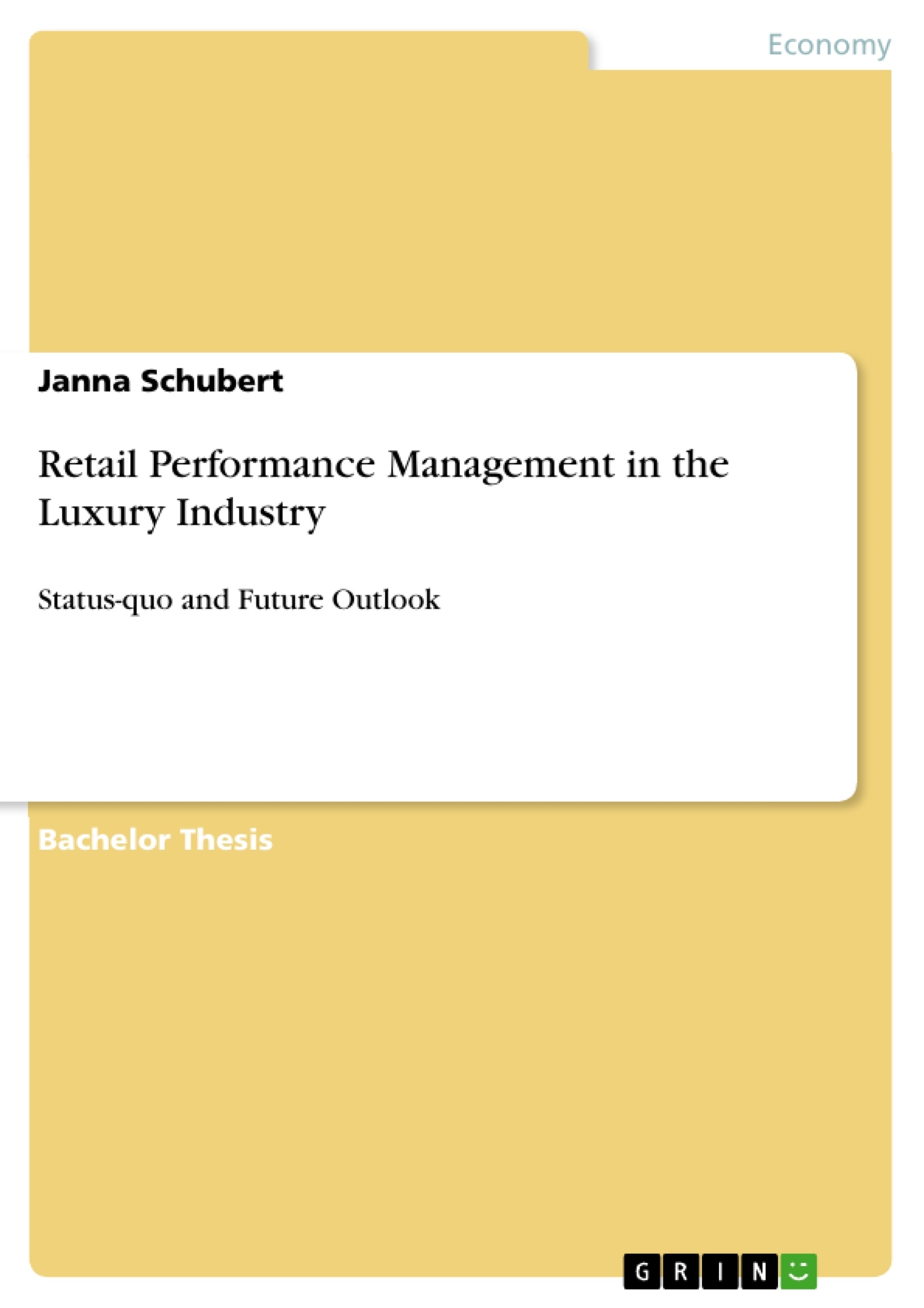In order to supply customers with the growing demand of luxury, luxury retail is
gaining importance on a global scale. More and more new luxury companies and retailers enter the global market and thus render it more competitive. Additionally, the financial crisis has struck many luxury companies and retailers that thought themselves safe from market and demand fluctuation very hard – pushing some to the verge of bankruptcy.
This increases the necessity to make use of resources as wisely as possible and to control costs and investments. But how does this affect luxury businesses?
Inhaltsverzeichnis (Table of Contents)
- Introduction
- Problem Definition and Objective
- Course of the Investigation
- Theoretical Foundations
- Conceptualizing Retail Performance Management
- Two Main Guidelines of Enhancing Performance
- Target Values and Key Figures
- Performance Pyramid
- Balanced Scorecard - A Management Instrument
- Concepts of Luxury
- Definition of Luxury
- Features of Luxury brands
- Conceptualizing Retail Performance Management
- Changes in the Luxury Retail Industry
- Recent Economic Developments in the Luxury Industry
- Changes on the Demand Side
- Purchasing Power's Impact on the Luxury Industry
- Customer Needs
- Shopping Behaviour
- The Neo-Wilde Consumer
- Changes on the Supply Side
- Flagship Stores
- Multi-brand Stores
- Online Shops
- Transferability of Retail Performance Management into Luxury Fashion
- Product Quality & Availability
- Sustainability
- Logistics: Supply Chain Management
- Logistics: Ordering
- Distribution Channels & Target Group
- Sales Personnel & Service
- Shopping Experience & Store Policy
- Practical Application of Retail Performance Management
- Product Quality & Availability
Zielsetzung und Themenschwerpunkte (Objectives and Key Themes)
This thesis aims to analyze the status quo of retail performance management in the luxury industry and assess its future outlook. The focus is on identifying key factors that contribute to successful retail performance within this specific market segment. The paper explores the challenges and opportunities presented by the evolving luxury landscape, considering both economic and consumer-driven trends.- Retail Performance Management in the Luxury Industry
- Key Performance Indicators and Metrics in Luxury Retail
- Consumer Behavior and Trends in Luxury Goods
- Challenges and Opportunities in Luxury Retail
- Sustainable Practices and Supply Chain Management in Luxury Fashion
Zusammenfassung der Kapitel (Chapter Summaries)
The first chapter introduces the problem definition and objectives of the thesis, outlining the scope and methodology of the investigation. Chapter two establishes theoretical foundations, exploring concepts related to retail performance management and defining luxury goods and brands. Chapter three examines changes in the luxury retail industry, focusing on economic developments, shifts in consumer demand, and evolving trends on the supply side. Chapter four explores the transferability of retail performance management principles to the luxury fashion industry, considering factors like product quality, sales personnel, and the overall shopping experience.Schlüsselwörter (Keywords)
This thesis focuses on the intersection of retail performance management, luxury industry, consumer behavior, supply chain management, sustainable practices, and luxury brands. It examines the application of key performance indicators and metrics in this specific context, analyzing the challenges and opportunities presented by the evolving luxury landscape.
Ende der Leseprobe aus 79 Seiten
- nach oben
- Arbeit zitieren
- Janna Schubert (Autor:in), 2010, Retail Performance Management in the Luxury Industry, München, GRIN Verlag, https://www.grin.com/document/294170
Blick ins Buch



